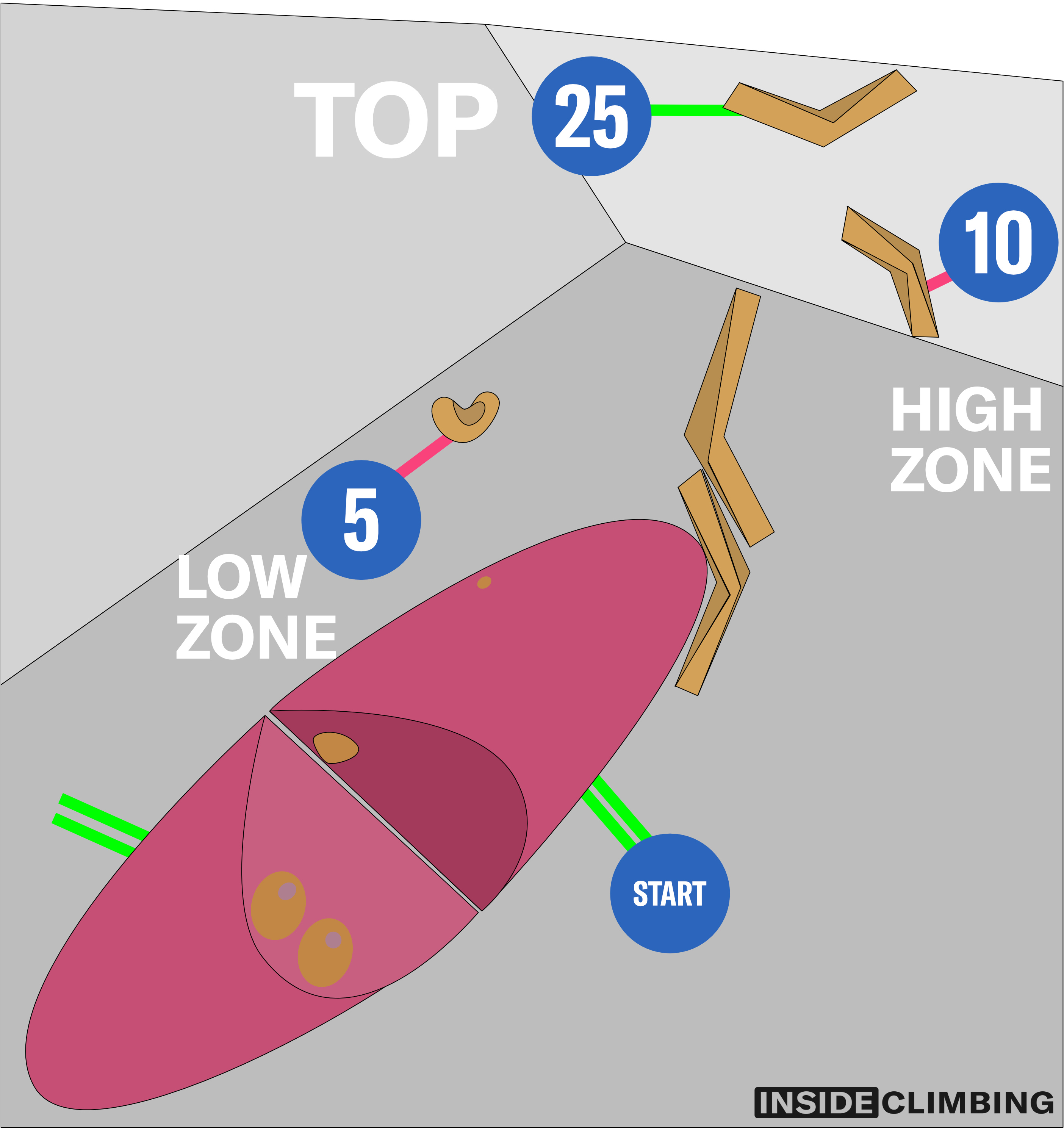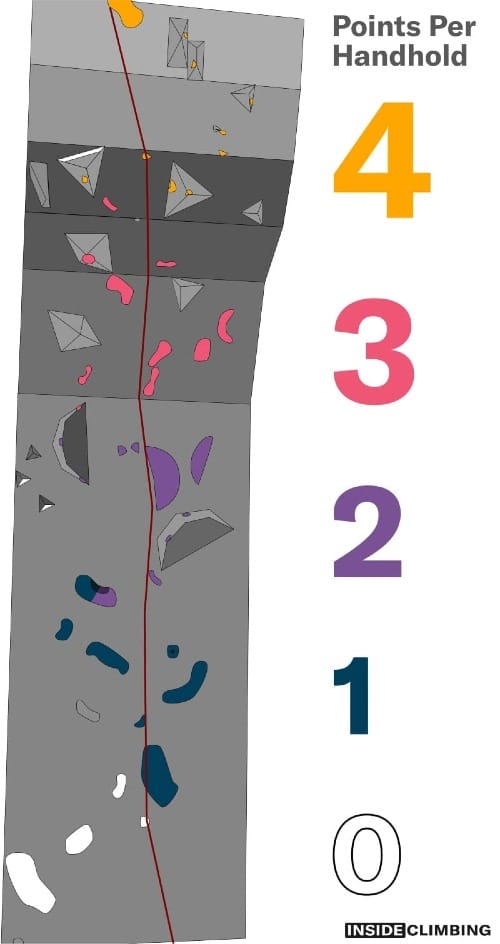For Paris 2024, Sport Climbing has two sets of medals instead of just the one in Tokyo. While Speed Climbing has been split off and gained its separate medal, Boulder and Lead remain combined.
But the format has changed.
The old format used the ranking of individual competitors and multiplied them to score athletes’ performance. The new format rewards athletes for their performances on the climbs, no matter what anyone else does. An athlete’s score is the total of all the points athletes score on each boulder and route they compete on.
The Format
Boulder&Lead Competitions can have three rounds: qualification, semi-finals, and finals.
The Continental Qualifiers and the Olympic Qualification System will mostly use all three rounds. At the World Championship, we will only have semi-finals and finals. The semi-finals are made up of the top 20 athletes from qualification, and the top 8 will progress to the Final, subject to ties.
Boulder and Lead rounds must be separated by at least 2 hours if they are on the same day for qualification and semi-final rounds. For the final, there must be at least a 20-minute gap between the back-to-back rounds.
In each round, athletes will compete on four boulders and one route.
The boulders have two different zones to aid separation in scoring. However, each boulder can still have at most 12 hand holds and should average between 4 and 8. The route must have at least 40 holds as long as the scoring uses the top 40 holds of the route. The time limits are the same as normal Boulder and Lead competitions. For Boulder, Athletes have five minutes to attempt boulders in the qualification and semi-final rounds. In the final, athletes have four minutes with 2 minutes of observation time per boulder before the round. For Lead, athletes have six minutes of observation and six minutes to attempt the route.
Athletes are then ranked by their total score out of 200 points across both disciplines.
Scoring in Boulder
Each boulder in a Boulder round is scored out of 25 points. An athlete gets 25 points for controlling the top hold, regardless of whether they use zone holds. The high zone hold is worth 10 points, and the low zone holds 5 points. Athletes lose 0.1 points for each unsuccessful attempt to reach the highest-scoring hold they secure.

This means that:
- An athlete who flashes a boulder, topping it on their first attempt, will score 25 points.
- An athlete who takes 4 attempts to top a boulder will score 25 - 0.4 = 24.6 points.
- An athlete who gets the high zone hold on their 2nd attempt gets 10 - 0.2 = 9.8 points.
An athlete’s score for the Boulder round is the sum of their scores on the boulders out of a maximum of 100 points.
Scoring in Lead
For Lead, the athletes score points depending on how high up the lead route they get. Only the top 40 holds on a route are scored, so the route must be at least 40 holds long. The first 10 holds are worth 1 point, the next 10 holds are worth 2 points, the next 10 are worth 3 points, and the last 10 are worth 4 points. An athlete’s score is the sum of all the holds they use on the route.

This means:
- An athlete who reaches hold 20 below the top scores 30 points.
- An athlete who reaches hold 10 below the top scores 60 points.
- An athlete who reaches hold 5 below the top scores 80 points.
- An athlete who reaches the top hold and clips the final quickdraw scores 100 points.
Pluses awarded to athletes for upward progression towards the next hold are worth 0.1 extra points. If an athlete reaches the top hold but fails to clip the final quickdraw, they score 99.9 points.
Comparison
Let us compare what points correspond to across the two disciplines.
| Points | Lead Score | Boulder Score |
|---|---|---|
| 100 | Top hold | 4 tops |
| 80 | 5 holds from the top | 3tops and 1 low zone hold |
| 60 | 10 holds from the top | 2 tops and 2 low zones |
| 30 | 20 holds from the top | 3 high zone holds |
| 10 | 30 holds from the top | 1 high zone |
So, it is easy to score low on the route and get a few zones in Boulder while getting to the top of multiple boulders or the last 10 holds of the route, which will profit athletes the most.
Although boulders will lose a few points from multiple attempts, they can almost certainly make up for this at the bottom of the lead route.
The discipline will become unbalanced if the route or the boulders are significantly harder. Of all the versions of the Combined discipline, this one will demand the most of the routesetter to ensure that the overall winner is the best-combined athlete.





